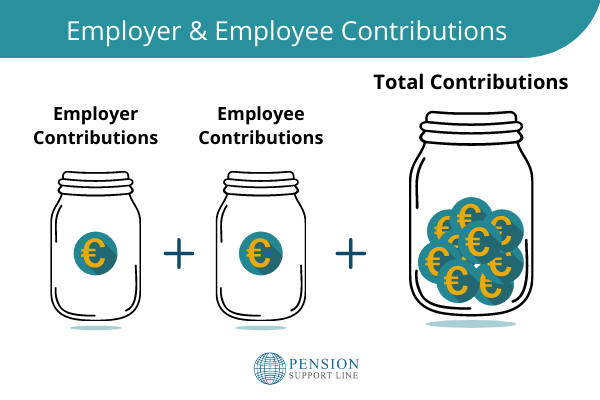If you are looking for a pension plan that has flexibility, look no further than a Personal Retirement Savings Account (PRSA).
We have written this blog to help answer some of the frequently asked questions from our clients about PRSA’s.

Whether you are looking to start a PRSA, review an existing one, or want some general pension information, hopefully, this blog provides some help.
Having a pension is probably more important than ever before. Costs of living are increasing. Combine this with an aging population and a State pension surrounded by uncertainty it is not pleasant reading.
Having a private pension in place will give you the best chance to plan for retirement.
What is a Personal Retirement Savings Account (PRSA)?
A PRSA is a type of pension plan. It offers convenience and flexibility as policyholders have the ability to make one-off or regular contributions.
A PRSA plan is a contract between the policyholder and an authorised PRSA provider. A Life Assurance company will provide the contract.
It is a tax-efficient way to help you save for retirement and contributing to a PRSA will allow you certain tax advantages.
Process of starting a PRSA:
The process of starting a PRSA is relatively simple. An employer may contribute which means this might be your preferred route.
However, if you are setting up the PRSA yourself, the process will be along the lines of:
Step 1: Contacting our team
Step 2: Meet with your financial advisor (can be done online or in-person)
Step 3: Complete the fact-finding process
Step 4: Assess your appetite for risk
Step 5: Discuss and select an appropriate investment strategy
Step 6: Start your PRSA
Step 7: Annually review your plan and its performance
If you would like more information on the ins and outs of starting a pension, we’ve written a more in-depth blog.
Types of PRSA’s
There are two types of PRSA’s. A standard PRSA and non-standard PRSA

Standard
A standard PRSA has maximum charges of 5% of contributions paid along with 1% per annum of the PRSA assets.
Although, you are often more restricted in your fund choices than with a non-standard PRSA. Standard PRSA’s invest in pooled funds where the risk level is diversified across a large number of investment choices.
Non-Standard
With a non-standard PRSA, you tend to have a wider choice of investment options. However, charges on non-standard PRSA’s are not capped and in most cases are higher than those in standard PRSA’s.
Although having a wider choice of investment options may be appealing, it is important you understand any decisions you make.
If you are not familiar with certain products or investing as a whole, a standard PRSA may be a more appropriate choice.
Whichever route you decide to take, be sure to enlist a qualified professional. If you are unsure of anything, do not be afraid to ask questions.
Who can set up a PRSA?
Anyone can contribute to a PRSA. You can make contributions that are tax-deductible within certain limits. However, you must be in employment to benefit from these tax reliefs.
Although, you still can contribute to a PRSA regardless of employment status.
Can an employer contribute to a PRSA?
An employer may contribute to your PRSA but is not obliged to. However, they must put an option of a standard PRSA in place should any employees request such.

The responsibilities of an employer include:
- Notifying any employees who do not have access to a pension scheme that they have the right to contribute to a standard PRSA.
- Allow a qualified professional access to employees during working hours to set up a PRSA.
- Deducting any contributions you wish to pay into your PRSA from your salary through payroll.
- Notify you of the deduction of contributions.
Benefits of PRSA
Having a PRSA has many benefits. Along with allowing you to plan for retirement it also gives you the ability to:
- Have complete control over your choice of investment strategy.
- Choose from a wide variety of investment options.
- Enjoy flexibility concerning your contributions. Should your circumstances change you can fit your contributions to align with this.
- Have your employer contribute should they choose to do so. These contributions fall under Benefit In Kind.
- See your PRSA grow free of income and capital gains tax.
- Access 25% of your benefits tax-free at retirement.
Tax Advantages of a PRSA
The government does not want everyone dependent on the State pension. Having everyone over the age of 66 surviving on €35 a day would be a struggle.
Therefore, they put tax incentives in place to entice us to contribute to a pension.
For example, should you contribute €100 to a PRSA per month and you are in the 20% tax bracket, the ‘real’ cost would be €80.
If you were in the 40% income tax bracket it would only cost €59.
Your payroll department would calculate your tax relief. Contributions will be automatically deducted at source.
How Tax Relief Works
| 20% Tax Bracket 40% Tax Bracket | |||
| €100 | Total Investment Into Your Pension | €100 | |
| -€20 | Less Tax Saved | – €40 | |
| €80 | Net Cost To You | €59 | |
However, there are limits as to how much tax relief you can receive on contributions.
Tax Relief on Contributions
Unfortunately, we cannot contribute unlimited funds and receive tax relief. There are limits and thresholds.
Limits directly correlate with age and income.
| Age | Maximum % of earnings allowable for tax relief on pension contributions |
| Under 30 | 15% |
| 30-39 | 20% |
| 40-49 | 25% |
| 50-54 | 30% |
| 55-59 | 35% |
| 60 or over | 40% |
(The maximum earnings limit for contributions is €115,000) source: www.revenue.ie
PRSA Retirement Options
As we know, your PRSA benefits will build as you continue to contribute. You will then have the opportunity to access your funds between the ages of 60-75.
Depending on your situation, you may have the ability to access 25% of your fund tax-free.
However, this will be subject to Revenue limits. This is a lifetime limit of €200,000.
With the remaining, you have different options available to you. These include:
-
-
- Purchasing an Annuity, or
- Take as cash (subject to income tax), or
- Invest in an Approved Retirement Fund (ARF), or
- Invest in an Approved Minimum Retirement Fund (AMRF), or
- Retain in a PRSA (also known as a Vested PRSA)
-
Planning For Retirement
We all want to enjoy our retirement. Although, sometimes it can seem so far away it is difficult to plan appropriately.
However, we are living longer, healthier lives than ever before. Therefore, having a solid pension plan in place will aid you to live the lifestyle you deserve.
Our survey conducted in 2021, showed that Irish people would like on average €433,333 in their pension pot at retirement.
This is quite a large amount of money and will take some planning and time to accumulate. It will also mean regularly reviewing your pension to ensure you are on the right track.
However, it is never too late to start a pension. A PRSA is an excellent vehicle to help you plan for retirement in a tax-effective manner. Whether you are looking to start a pension in your 30’s or are in your 50’s, our team would be happy to help.
The later you start the more ground you will have to make up. Therefore, the best time to start is today.
Who can I set up a PRSA with?
Most people setting up a PRSA do so with the help of a financial broker. If you would like to chat with an experienced Qualified Financial Advisor, we’d be happy to help.
A lot of brokers hold agencies with the major life insurance companies. This will allow them to analyse the market and ensure you get the most suitable policy possible.

However, some brokers operate on a tied agent basis. This means they only deal with one specific life insurance company.
A disadvantage of going with a tied agent broker is you may have a lesser choice of fund options.
Where can I invest my contributions?
Depending on the strategy you decide, you may have the option of splitting your investment. There are multi-asset funds available which allow you to split your investment.
Often you will have the choice between Equities, Property, Cash, and Bonds.

Equities – These refer to shares of ownership issued by publicly traded companies. They will be available on various stock exchanges.
Property – This will often include commercial property such as an office or industrial retail premises. Property and other physical assets are favored and they are tangible assets. You may also hear them being referred to as a ‘real’ asset.
Cash – The advantage of having money held in the form of cash is the ease of access.
Bonds – A simple way to think of bonds is a loan. They are issued by companies and governments (treasury bonds) as a way of raising money.
What should I consider before investing?
As with anything pensions-related, there are some considerations to be made. Whether you are starting a PRSA, or transferring out of a Defined Contribution scheme take time while making your decision.
Chat with your financial advisor and assess your financial situation as a whole. Your pension is only one piece of the puzzle.
Some aspects to consider when discussing your PRSA are:
- How much time do you have before you reach retirement age?
- What risk level are you comfortable with?
- How much will you need in retirement and how long will your pension last?
- What lifestyle would you like in retirement?
It is also worth noting that some of the answers to these questions may change over time. Your situation now may be different from that in 3-4 years.
This is why a regular pension review is important. It will help you see how your pension is performing while also helping to have a clear understanding of what is needed for retirement.
What to do next?
If you are unsure of anything or need clarity, feel free to contact our team.
Whether it be starting a pension or reviewing a current one, we would be happy to help.
The process of starting a PRSA is relatively simple and will help you plan for the future. As we know, it is also a tax-efficient way of saving so it is a win-win.
Thanks for reading!
Pension Support Line Team
Phone – 01 890 3518
Email – info@pensionsupportline.ie
Book a quick chat – https://calendly.com/pensionsupportline/pension-support-line
Book Your Free Consultation
*This blog should be used for information only and not taken as financial advice.



